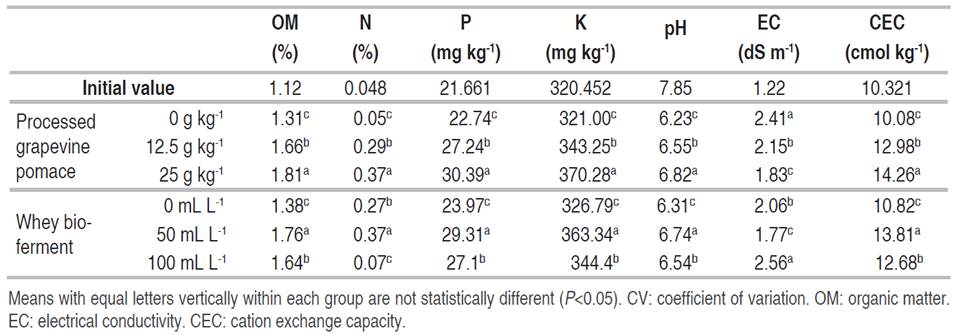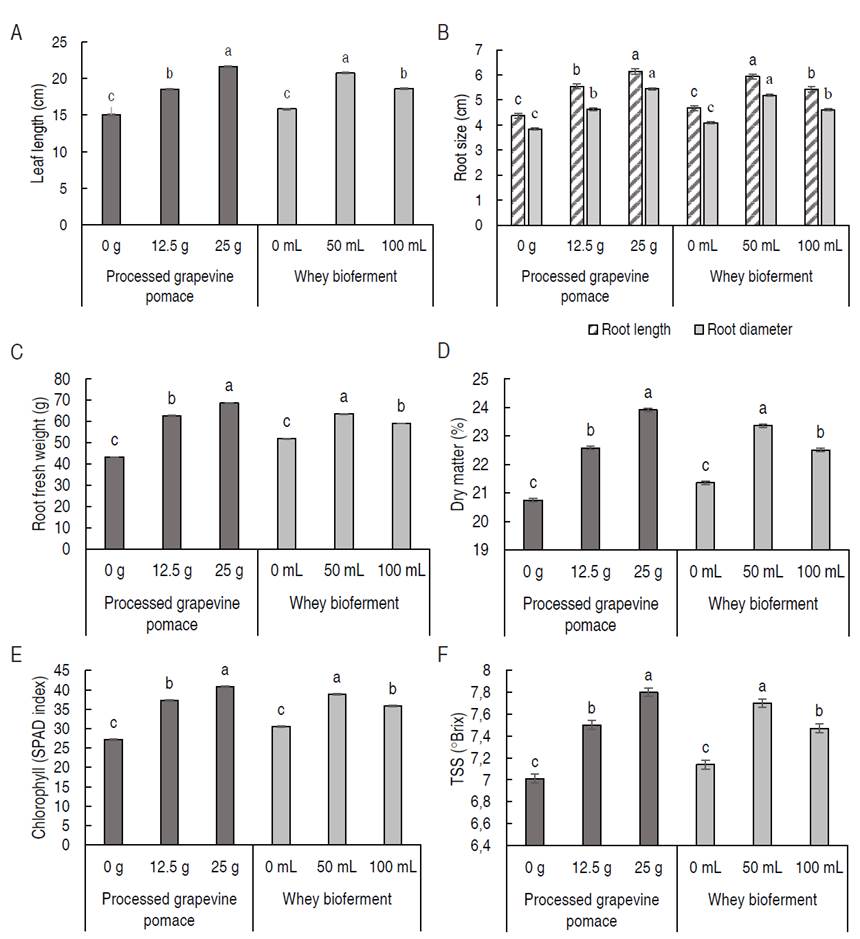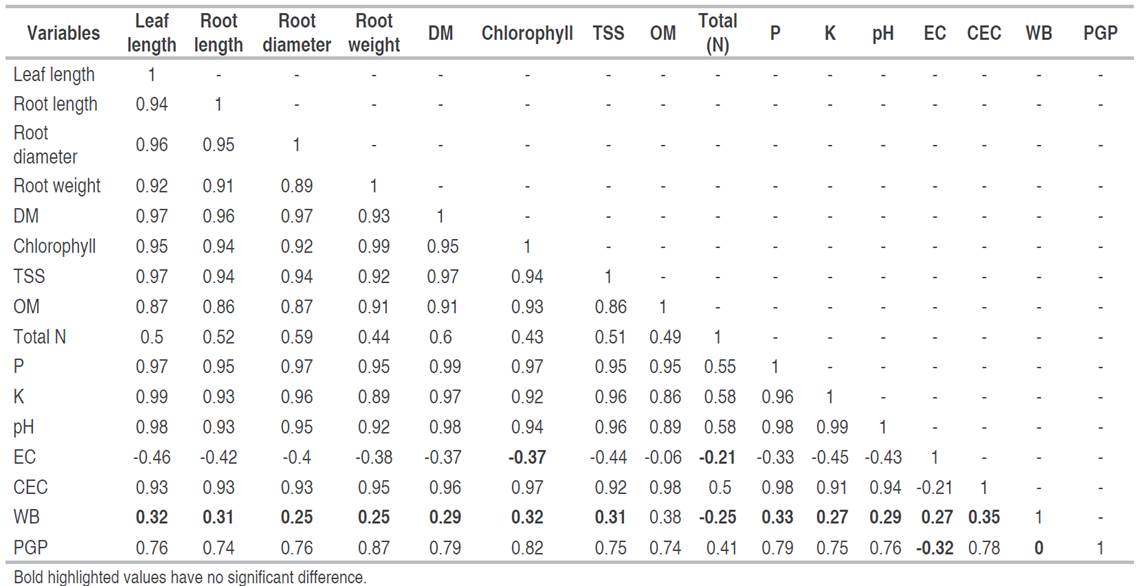Environmental pollution resulting from inadequate management of agro-industrial wastes is a pressing environmental issue, particularly in developing countries (Álvarez-Palomino et al. 2018; Nayak and Bhushan 2019; Leite et al. 2021) and arid climates (Gravuer et al. 2019; Liu et al. 2021). Most of these residues contain lignocellulosic biomass, with cellulose and hemicellulose polymers accounting for approximately 75 to 80%, which hinders their degradation rate (Cotacallapa-Sucapuca et al. 2020; Gurgenidze et al. 2022). Consequently, these materials require prior processing to be converted into raw materials that offer environmental, social, or economic benefits (Nayak and Bhushan 2019).
The viticulture industry produces significant amounts of by-products that, if not properly managed, can have a significant environmental impact (Troilo et al. 2021). Grapevine pomace, which is composed of skins, seeds, and any other solids remaining after grape pressing, is the main solid by-product of the winemaking process. Grapevine pomace is primarily comprised of cellulose, lignin, hemicellulose, and pectin (Saval 2012; Gurgenidze et al. 2022). and it is commonly used for producing functional foods (Gurgenidze et al. 2022), distillates, ethanol, animal feed, compost, and other biofertilizers (Cotacallapa-Sucapuca et al. 2020).
Whey is a by-product of milk processing for cheese making and is generated through the enzymatic breakdown of the colloidal system of milk into liquid and solid components (Pais et al. 2017). It contains a high concentration of nutrients that are of agricultural interest, including calcium, phosphorus, potassium, and iron (Mazorra-Manzano and Moreno-Hernández 2019; Williams and Dueñas 2021). Currently, whey is used in the production of animal feed, food, beverages (Williams and Dueñas 2021), energy (País et al. 2017), fertilizer (Felli et al. 2012) and even fungicides (Liu et al. 2021); however, due to the large volume of production, a significant portion of it is discarded into rivers and soils, leading to environmental pollution issues (Liu et al. 2021; Felli et al. 2012; Osorio et al. 2018; López-Barreto et al. 2018). In this context, the revalorization of waste from the viticulture and dairy agroindustry presents itself as a sustainable option. One crop that could greatly benefit from applying processed whey and grapevine pomace is radish (Raphanus sativus L.). Radish is characterized by its short phenological period and the development of its edible organ in direct contact with the substrate (Ramírez and Pérez 2006). From a nutritional standpoint, radish has high calcium and potassium requirements (Mendivil-Lugo et al. 2020; Liriano et al. 2020), aligning with the nutrients these biofertilizers provide. This study aim was to determine the impact of using processed grape pomace (PGP) and whey bio-ferment (WB) on the cultivation of radish under arid soil conditions.
MATERIALS AND METHODS
The experiment was developed in the agricultural plot B4-60 of the Majes Irrigation, Arequipa, Peru (16°21'11" S, 72°11'27" W), 1,410 meters above sea level (masl) during May and June 2022. The average temperature was 18.3 °C (maximum 27.2 °C and minimum 9.4 °C), with a relative humidity of 29% and no precipitation. The area's climate is classified as desert, characterized by extreme aridity. The soils in the area are classified as Entisols (MINAG 1975; Wei et al. 2021), with low organic matter (OM) (1.12%) and sandy-loam texture (88.14% sand, 6.61% silt and 5.25% clay).
Experimental design and treatments
A completely randomized design with a factorial arrangement of treatments was used. The study involved two factors: processed grapevine pomace (PGP) with three levels (0, 12.5, and 25 g kg-1 of soil) and whey bio-ferment (WB) with three levels (0, 50, and 100 mL L-1). This resulted in nine treatments, with three replicates per treatment. The experimental unit consisted of rectangular containers measuring 45 cm in length, 20 cm in width, and 15 cm in height. Each container contained 15 kg of agricultural soil obtained from a 13 cm undisturbed soil profile. The PGP was thoroughly mixed with the soil before planting. The WB was applied through the irrigation system 7, 14, and 21 days after seeding.
Preparation and characterization of biofertilizers
On a black plastic base, dry and fragmented pomace (10 kg), molasses (5 L), ash (2 kg), yeast (100 g), and cow dung (2 kg) were mixed. The pomace was obtained as a residue from the production of wine (var. Moscatel), after an alcoholic fermentation process for 10 days at 25°C. Water was sprayed onto the mixture until it reached 70% humidity. Subsequently, the mixture was covered with black plastic to increase the temperature and accelerate the activity of microorganisms. Daily turning was performed to facilitate the processing. After 30 days, processed grapevine pomace was obtained, which was sieved using a 2 mm mesh. The chemical analysis of the obtained product revealed the following nutrient levels: OM 26.15%, carbon (C) 15.17%, nitrogen (N) 1.25%, phosphorus (P) 0.32%, potassium (K) 0.67%, calcium (Ca) 0.85%, magnesium (Mg) 0.11%, C/N ratio 12.15, pH=7.82, electrical conductivity (EC) 2.15 dS m-1.
For the preparation of the WB, a mixture of whey (15 L), water (25 L), fresh cattle manure (5 kg), and ash (1 kg) was blended in a 50 L capacity plastic cylinder. The container was then tightly sealed for anaerobic digestion over 20 days. Following the process, an irrigation system was applied to the mixture after filtering it through a canvas cloth. The chemical characterization of the obtained product indicated the following nutrient contents: OM 8.42%, N 0.27%, P 0.11%, K 0.31%, Ca 0.17%, magnesium Mg 0.02%, pH=5.85, EC of 5.42 dS m-1.
Crop management
The crop was grown in rectangular containers arranged in an open field, with a density of 15 plants per container. Before seeding, the seeds were applied with a mixture of thiamethoxam (insecticide) + difenoconazole (fungicide) + fludioxonil (fungicide) (1.5 mL kg-1 seed). Additional fertilization included two applications of 100 kg ha-1 at 10 and 20 days after seeding, totaling 200 kg ha-1. Manual weed control was performed before each fertilization. Abamectin (insecticide) (0.75 mL L-1), chlorpyrifos (insecticide) (2.5 mL L-1), and fosetyl aluminum (fungicide) (1.5 kg ha-1) were used for pest and disease control. Irrigation was carried out through a drip system with a flow rate of 2 L h-1, applying an irrigation depth of 3.2 mm and an irrigation duration of approximately 30 min every other day. Manual harvesting was conducted 32 days after seeding.
Characteristics evaluated in the soil
The soil was analyzed before crop establishment and at the end of the growing season (32 days after seeding) in three representative samples for each treatment. OM (%), total N (%), available P (mg kg-1), K (mg kg-1), pH, EC (dS m-1), and cation exchange capacity (CEC) (cmol kg-1) were determined by Walkley-Blac method, micro-Kjeldahl, modified Olsen, spectrophotometry with ammonium acetate extraction, potentiometer (Hanna, HI9126, USA) in soil/water ratio 1:1, conductivity meter (Hanna, HI993310, USA) in saturated soil extract, and saturation with ammonium acetate, respectively. The methodologies for each determination correspond to those described by Bazán (2017).
Characteristics evaluated on the crop
Radish samples were collected at the end of the vegetative period (32 days after seeding). Three plants were selected from each experimental unit, and the roots and leaves were separated to obtain average results. Measurements were taken for leaf length (cm), fresh weight (g), diameter, root length (cm), percentage of dry matter (DM), and total soluble solids (TSS) of the roots. The leaf chlorophyll index was recorded directly before harvest using a chlorophyll meter (Minolta - SPAD - Soil Plant Analyzer Device, 502, New Jersey, U.S.A.). The root dry matter content was determined by placing a fresh subsample of 200 g in an oven (Binder, ED115, Germany) at 65 °C until a constant weight was achieved. The results were calculated using the equation 1. TSS was measured using a digital refractometer (Hanna, HI96801, USA) with 1 mL of previously filtered tissue extract.
Where DM(%) represents the percentage of dry matter, DW constant dry weight, and FW is the fresh weight.
Statistical analysis
Statistical analysis was performed by using the Infostat software in its 2011 release (National University of Cordoba, Argentina). The means-specific differences were determined by the least significant difference - LSD method applied following the analysis of variance (ANOVA); the significance of differences was defined atP<0.05.
RESULTS AND DISCUSSION
Agro-industrial waste is currently perceived as an opportunity to reuse nutrients (Cantão et al. 2021), with benefits that were evidenced in this study. Analysis of the evaluated soil characteristics at the main effects and interaction levels revealed that the differences were significant for all the variables evaluated (Table 1). At the level of main effects, PGP applications significantly favored the content of OM, N, P, K, and CEC, increased pH, and significantly decreased EC compared to the absolute control. It has been described that in arid and semi-arid climates, the incorporation of biofertilizers improves soil physical, chemical and biological properties (Celestina et al. 2019; Lu et al. 2020; Liu et al. 2021) with environmental benefits, such as increased soil carbon, soil water holding capacity, net primary productivity and N content in plant tissues and decreased amount of surface runoff (Gupta et al. 2018; Gravuer et al. 2019; Hafez et al. 2020). In this trial, the initial OM content is typical of an arid zone, probably due to limited plant cover, lack of moisture and microorganisms (Wei et al. 2021); this initial condition made it possible for soil improvements to be significant despite the fact that bio-fertilizer applications were spotty.
Table 1 Results of the P value of the main effect of processed grapevine pomace, whey bio-ferment and their interaction on arid zone soil characteristics (analysis of variance - ANOVA).

Regarding WB, the application of 100 mL L-1 showed the highest values of EC with a significant difference from 50 mL L-1 and the absolute control (Table 2), evidencing one of the most important limitations of the use of bio-ferments and organic fertilizers in arid and semi-arid zones: the high salt content (Lu et al. 2020).
Table 2 Effect of the application of processed grapevine pomace and whey bio-ferment on the chemical characteristics of the soil at crop harvest.

At the interaction level, it was observed that combined applications of PGP and WB decreased EC by 0.99 dS m-1 concerning individual applications. The negative relationship of K with EC (R2 -0.45; P=0.02) (Table 3) could explain why joint applications of PGP and WB caused less salinity than applying separately; the K contained in PGP may have a buffering effect on the elevated salinity of WB. Hafez et al. (2020) reported a similar result when applying vermicompost and biochar, which generated a combined effect by decreasing the detrimental effects of soil salinity and water stress in wheat plants.
The results obtained in the crop evaluations showed significant differences in the effects of the treatments applied, both at the level of the main effects and interaction levels (Table 4). To analyze the effects of PGP and WB, the results are shown at the main effects level. The application of biofertilizers was found to improve crop features in comparison to absolute control, based on the benefits identified in the soil characteristics. (0 g PGP, 0 mL WB) (Figure 1). Regarding PGP doses, a strong directly proportional relationship was found with the variables leaf length (P<0.0001), chlorophyll (P<0.05), length (P<0.05), diameter (P<0.05), weight (P<0.05), DM (P<0.05), and TSS (P<0.05) of the root. In the case of WB, although correlations were positive in all cases (minimum R2 0.25 and maximum 0.38), they were not significant (Table 3). These results correlate fairly well with Ramírez and Pérez (2006) and Mali et al. (2018), who concluded that applying organic fertilizers and biofertilizers affects crop growth directly, development, and production.

Figure 1 Main effects of the application of processed grapevine pomace (g kg-1) and whey bio-ferment (mL L-1) on A. leaf length, B. leaf chlorophyll (SPAD index), C. root dry matter (%), D. root length and diameter, E. root fresh weight, and F. root total soluble solids TSS. Means with equal letters between columns of the same color are not statistically different (P<0.05).
Table 4 Results of the P value of the main effect of processed grapevine pomace, whey bio-ferment and their interaction on characteristics in radish crop (analysis of variance - ANOVA).

Plant size was significantly increased by the application of PGP (25 g kg-1), with a difference of 6.53 cm in leaf length (Figure 1A), 24.45 g in fresh weight (Figure 1E), 1.77 cm in root length and 1.6 cm in root diameter (Figure 1D) over the control. Chlorophyll and TSS measurements showed the same trend: higher PGP concentration, higher chlorophyll (Figure 1B), and TSS (Figure 1F). These improvements would be related to the nutritional supply of MO, N, P, K, Ca, and Mg from the PGP.
For WB, the highest values were obtained with the 50 mL L-1 dose, but when increasing to 100 mL L-1, the leaf length (Figure 1A), chlorophyll index (Figure 1B), DM (Figure 1C), root length (Figure 1D), root weight (Figure 1E) and root TSS content (Figure 1F) decreased significantly (P<0.05). This could be attributed to the high salinity (EC) of WB impacting nutrient imbalance, uptake blockage, and even phytotoxicity (Lu et al. 2020), which is reflected in the negative correlation of crop variables and soil EC (Table 3). Ghosh et al. (2014) found that salinity adversely affected the growth of three radish varieties, an EC of 12 dS m-1 limited root growth relative to an EC of 4 dS m-1.
Plant growth had a strong positive correlation with the final edaphic content of OM (average R2 0.89; P<0.0001), P (average R2 0.96; P<0.0001), K (average R2 0.95; P<0.0001), pH (average R2 0.95; P<0.0001) and CEC (average R2 0.94; P<0.0001), characteristics that are beneficial to achieve better yields (Table 3). Fertilizers from agro-industrial waste are characterized by their contribution of OM, microorganisms, amino acids, macro and micronutrients, structural compounds, and biostimulants that accelerate plant metabolism (Saval 2012; López-Barreto et al. 2018; Lu et al. 2020), increasing photosynthetic rate, leaf area development, fresh and dry biomass, TSS (Ramírez and Pérez 2006; Liriano et al. 2020). In the case of PGP, it mainly provides N, which acts directly on growth, production of reserve substances, and their maturation; on the other hand, WB mainly provides K, which participates in protein synthesis, assimilation, and transport of substances from the leaves to the radish reserve organs (De Sousa et al. 2018; Rattin et al. 2022).
WB applications have been reported to range from 26,000 L ha-1 (Canada) to 60,000 L ha-1 (Wisconsin, USA) (Felli et al. 2012); however, under the arid climate conditions of this study, the 50 mL WB L-1 dose presented the best results at the soil level and on radish characteristics. In the case of PGP, the results indicate that the higher the dose, the greater the benefits on the soil and on the agronomic yield of the crop (Table 2).
CONCLUSION
The results of this study underscore the potential for enhancing the agronomic performance of radish crops through the utilization of processed grape pomace and whey bio ferment. These have demonstrated efficacy in augmenting the availability of crucial macronutrients, including nitrogen, potassium, phosphorus, calcium, and organic matter. Such innovative approaches hold promise for optimizing crop productivity and sustainability in agricultural systems.

















